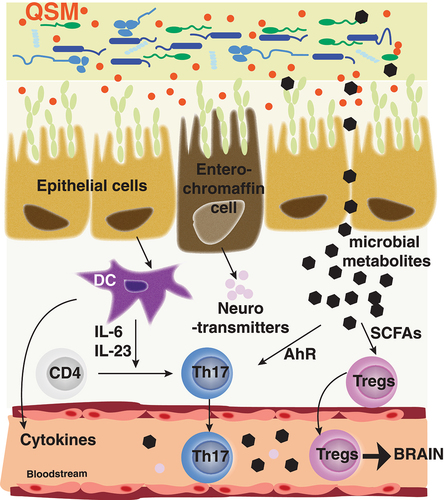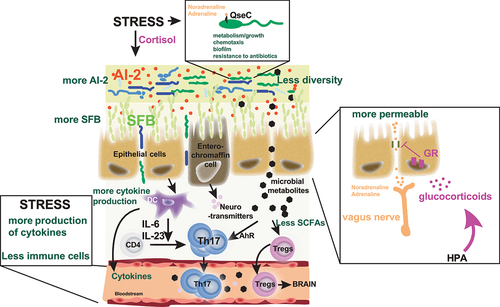Figures & data
Figure 1. AI-2 system in E. coli and AHL system in gram negative bacteria.

Figure 2. Effects of the microbiota on intestinal immune response.

Figure 3. Effects of stress on the microbiota and the immune response.

Register now or learn more
Open access
Figure 1. AI-2 system in E. coli and AHL system in gram negative bacteria.

Figure 2. Effects of the microbiota on intestinal immune response.

Figure 3. Effects of stress on the microbiota and the immune response.

People also read lists articles that other readers of this article have read.
Recommended articles lists articles that we recommend and is powered by our AI driven recommendation engine.
Cited by lists all citing articles based on Crossref citations.
Articles with the Crossref icon will open in a new tab.